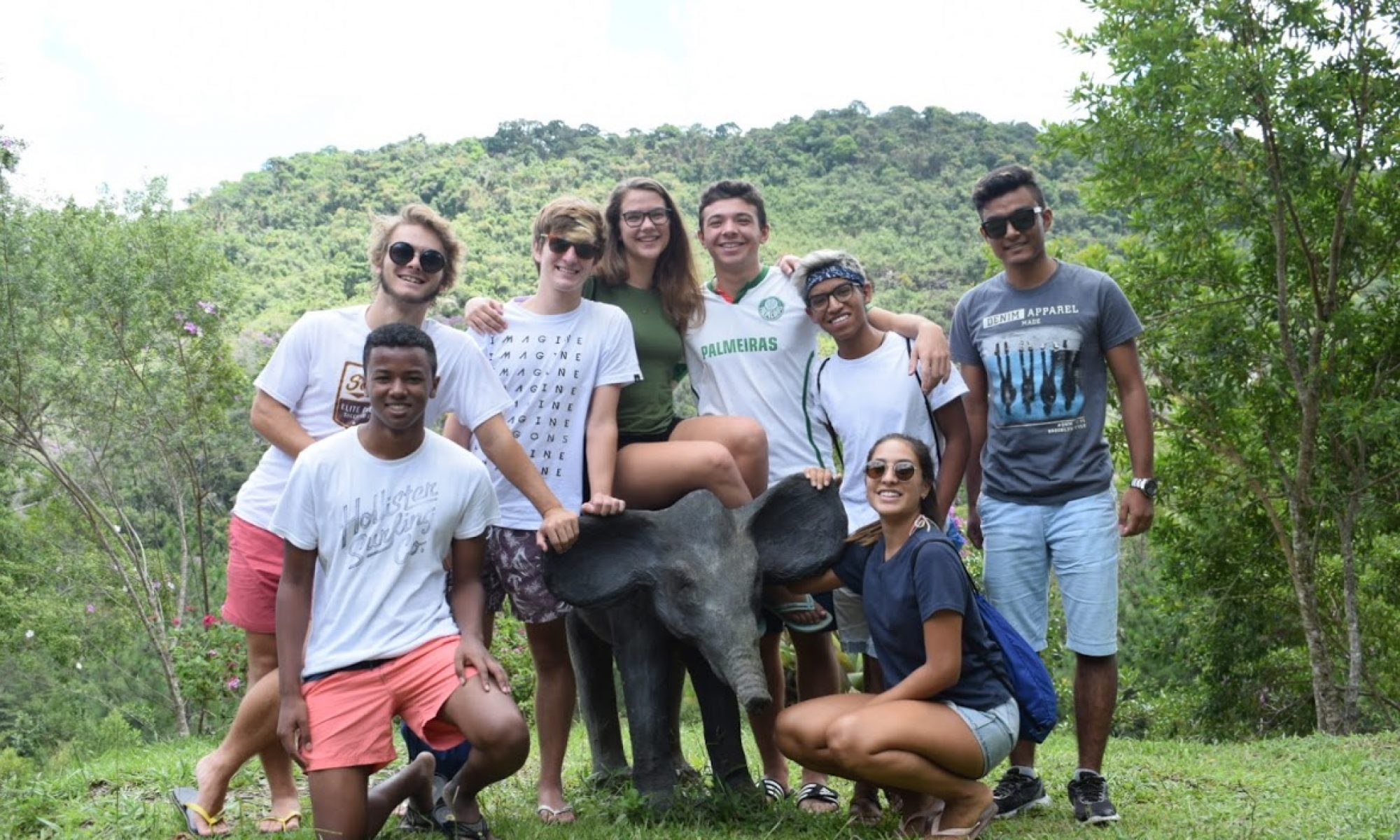By Zach, Tufts 1+4 Participant
I found a fountain last week. No special fountain or anything like that. I was just a fountain. Three tiers, stone color, nothing new.
But for whatever reason, the fountain became the immediate center of my attention. It was surrounded by a perfectly landscaped garden. The red shrubs and green hues encroaching upon it— their sole purpose was to draw the eye to the center of the garden where the grey chunk lay. I saw the fountain and wanted to photograph myself next to it. But the closer that I got to it, the less that I wanted to divulge into my own individualistic temptations to take a photo. I wanted to sit next to the towering sculpture and listen to it.
So I did. I sat right in front of the fountain and looked up to it. It shadowed over me: a sturdy giant which strained my neck to look to. I listened to its pitter-patter. Immense waves of tiny drops unifying to make a fragile and strong noise. I looked into the basins. Each was uneven. Imperfect. The water spilled out crooked and unequally from each leaving half of the fountain completely dry. Regardless, I remained frozen on the dusty ground completely transfixed on it.

When I was small and everything was different, I used to go to the bank with my dad. He had made friends with the tellers there and would make excuses to cash a stray check or take out a twenty from the counter. Each time—bored out of my underdeveloped mind—I’d get on my tippytoes to grab a blue lollypop from the counter. I would stand by his leg and convince myself that the candy was sufficient to keep me entertained while my dad talked with the bank lady until his breath ran out.
But after seeing my eyes glazed over with boredom, my dad would take me to the fountain outside of the bank to make it up to me. Again, this fountain was nothing special; it was made of an ugly and coarse stone. It always looked dirty and was known as being a nuisance to many. But we’d go outside and my dad would reach into his ragged wallet to pull out whatever change that he had left. We’d take it and toss it into the well, making wishes that we swore to never tell anyone.
And so every bank trip, I would go to the fountain with my dad and stand there captivated by the ugly brown mass. It wasn’t until last week that I felt the same sensation that was once so common to me— the feeling of complete attention for the fountain, listening to the unyielding drip-drip while watching the water pour out from the top. I was always so intrigued by the fact that the fountain could just take the old water and make it into new water. It seemed like it could go on forever.
So when I saw the fountain last week, by instinct, I had to pause to watch it. I had to sit by the grey monster and watch the same water trickle down the dark stone just to rise back up it again. Something about it just felt special— I get the feeling that something about it will always feel a little special to me. I just happened to find a little comfort in the fact that Ecuador has fountains too. Ugly and uneven fountains just the same that I used to watch with my dad.














